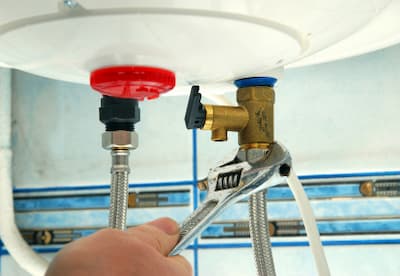Are you in search of advice about Tips on Maintaining a Water Heater?

Warm water is vital for everyday convenience, whether it's for a rejuvenating shower or cleaning meals. To ensure your hot water system runs efficiently and lasts longer, normal maintenance is vital. This post provides functional suggestions and insights on exactly how to maintain your home's hot water system to stay clear of disturbances and pricey fixings.
Introduction
Preserving your home's warm water system may seem overwhelming, however with a couple of easy steps, you can guarantee it runs efficiently for many years ahead. This guide covers whatever from recognizing your warm water system to DIY upkeep ideas and knowing when to employ professional aid.
Significance of Preserving Your Warm Water System
Regular maintenance not just prolongs the lifespan of your warm water system yet likewise ensures it runs effectively. Neglecting maintenance can cause decreased performance, greater energy expenses, and also early failing of the system.
Signs Your Hot Water System Demands Maintenance
Recognizing when your hot water system needs interest can prevent major concerns. Keep an eye out for indications such as irregular water temperature level, strange noises from the heating unit, or rusty water.
Understanding Your Hot Water System
Prior to diving right into maintenance tasks, it's practical to recognize the basic parts of your warm water system. Generally, this consists of the hot water heater itself, pipelines, anode poles, and temperature level controls.
Monthly Upkeep Tasks
Routine monthly checks can aid capture minor issues before they rise.
Purging the Hot Water Heater
Purging your hot water heater eliminates sediment buildup, boosting performance and lengthening its life.
Monitoring and Replacing Anode Rods
Anode rods prevent deterioration inside the container. Examining and replacing them when broken is critical.
Evaluating and Readjusting Temperature Level Settings
Adjusting the temperature level setups guarantees optimal efficiency and safety.
DIY Tips for Maintenance
You can perform several upkeep jobs yourself to maintain your warm water system in top problem.
Checking for Leakages
Consistently check pipes and links for leakages, as these can result in water damage and greater expenses.
Evaluating Pressure Alleviation Valves
Evaluating the stress safety valve guarantees it functions appropriately and stops extreme stress accumulation.
Protecting Pipes
Insulating warm water pipelines minimizes warm loss and can save power.
When to Call an Expert
While DIY maintenance is helpful, some issues need specialist expertise.
Complex Problems Calling For Expert Aid
Examples include significant leaks, electrical issues, or if your water heater is regularly underperforming.
Routine Expert Maintenance Advantages
Professional upkeep can consist of extensive evaluations, tune-ups, and ensuring conformity with safety and security standards.
Final thought
Normal upkeep of your home's warm water system is essential for performance, long life, and price financial savings. By adhering to these tips and understanding when to look for expert assistance, you can make certain a trustworthy supply of hot water without unforeseen interruptions.
Water Heater Maintenance Tips
Test the TPR Valve
Shut off the power and the cold-water supply valve. Place a bucket under the pipe connected to the temperature-pressure-release (TPR) valve on the top or side of the tank. (This valve opens if the tank pressure gets too high.) Lift the valve’s tab to let some water out, then let go. If water keeps flowing, drain the tank partway, unscrew the old valve with a pipe wrench, and install a new one. Check the Anode Rod
Put a hose to the tank’s drain cock and let out a few gallons of water. Now fit a 1 1/16-inch socket onto the rod’s hex head on top of the heater (or under its top plate) and unscrew the rod. If it’s less than ½ inch thick or coated with calcium, buy a new one, wrap its threads with Teflon tape, put it back in the tank, and tighten securely. Use this segmented rod if headroom above the tank is limited. Drain the Tank and Wash Out Sediment
Drain the remaining water in the tank into the bucket, then stir up the sediment on the tank’s bottom by briefly opening the cold-water supply valve. Drain and repeat until clean water comes out of the hose. Close the drain cock, refill the tank, and turn its power back on. Adjust the Temperature
Find the temperature dial on the side of the tank and unscrew its cover. Adjust the dial to 120 degrees using a flathead screwdriver. For every 10 degrees the temperature is lowered, you can expect to save up to 5 percent in energy costs. Turn the water heater off or the thermostat down to its lowest setting if you plan to be away from home for more than three days. Insulate the Pipes
Buy some self-sticking 3/8-inch-thick foam pipe insulation that matches the pipes’ diameter. Slide the foam over the hot-and cold-water pipes as far as you can reach. Insulating the cold-water pipe prevents condensation in summer. Peel the tape and squeeze the insulation closed. If the pipe is 6 inches or less from the flue, cover it with 1-inch-thick unfaced fiberglass pipe wrap. https://www.thisoldhouse.com/plumbing/21016402/how-to-maintain-a-water-heater

As a serious reader on What Kind of Maintenance Do Water Heaters Need?, I think sharing that piece of content was worthwhile. Sharing is nice. You won't know, you may very well be helping someone out. Thank you for taking the time to read it.
Call Today